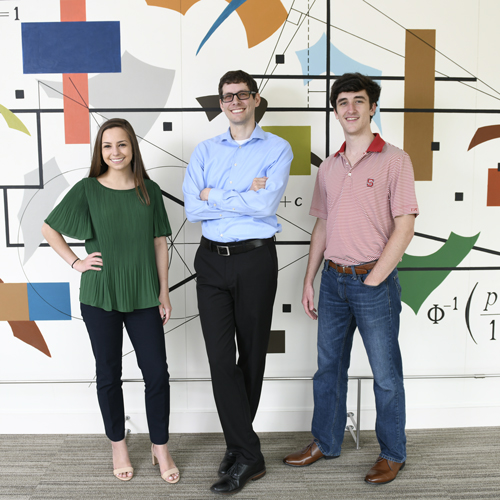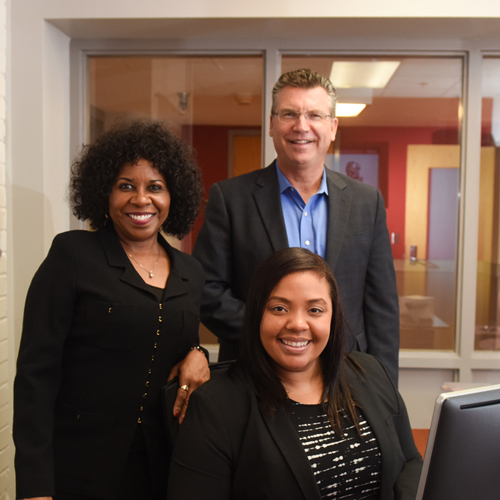
Denis Pelletier Brings Econometrics Expertise to Retirement Savings Research
The economy: It touches all aspects of our lives, from opportunities to earn an income to what we do with those earnings.
All that activity generates a lot of data. Among those making sense of the data are econometricians – people like Denis Pelletier, associate professor in the NC State Poole College of Management’s Department of Economics. The econometricians apply their expertise in mathematics and statistics to analyze economic data in relation to specific issues.
One of those specific issues is having sufficient income after retirement to maintain a desired quality of life. Pelletier and Robert Clark, Poole College professor of economics and professor of management, innovation and entrepreneurship, have recently published research on this topic.
“Denis has maintained a research agenda that includes both theoretical and applied work in econometrics,” said Lee Craig, head of the college’s economics department. In this project, Pelletier has done both.
 “Because other members of the department employ econometrics in their own fields, Denis often serves as an in-house consultant for his colleagues’ research. He has also played an important role in the NC State Graduate Economics Program, serving on and chairing a number of doctoral students’ dissertation committees,” Craig said. Craig, Clark and Pelletier responded to email interviews with Poole College communications for this story.
“Because other members of the department employ econometrics in their own fields, Denis often serves as an in-house consultant for his colleagues’ research. He has also played an important role in the NC State Graduate Economics Program, serving on and chairing a number of doctoral students’ dissertation committees,” Craig said. Craig, Clark and Pelletier responded to email interviews with Poole College communications for this story.
“Denis and I have been examining the retirement saving patterns of public employees,” Clark said.
“While state and local employees usually are covered by pension plans and Social Security, many will need to save more in order to achieve their desired standard of living in retirement,” Clark said. “Tax rules and pension regulations are complex, and it is important for employees to understand the value of contributions to supplemental retirement saving plans, such as 401(k), 403(b), and 457 plans,” he said.
Virtually all full-time state and local government employees are covered by a retirement plan, typically a defined benefit plan, in which they are required to participate. In addition, most school employees have the option of choosing to contribute to a voluntary retirement savings plan offered by their school district.
While private sector firms typically select a single vendor for their pension plans, “public employees face an expanded choice of retirement savings plans,” Clark and Pelletier wrote in a report on their research, which examines the decision to participate in a voluntary savings plan and the level of contributions for those that enroll in at least one of the plans.
Denis’ econometric expertise and knowledge of decision models has been essential in the success of these projects. He has been the team leader in data analysis and modeling of retirement saving.
“Using administrative data provided by state retirement systems and surveys of workers and retirees, we have examined the factors that influence individuals’ decisions to contribute to these plans. Denis’ econometric expertise and knowledge of decision models has been essential in the success of these projects. He has been the team leader in data analysis and modeling of retirement saving,” Clark said.
“The study’s findings indicate that the same economic and demographic factors that influence saving decisions by private workers also drive the decisions of school employees. The three savings plans offered to public employees have many similar characteristics; however, several differences in the plans imply that certain workers may prefer one plan type over the others,” the study’s authors wrote.
Other research studies have shown that plan characteristics such as automatic enrollment and employer matches influence the probability of employee participation in a plan and the contribution rate set by the employee.
In South Dakota, where Clark and Pelletier conducted their latest research, a change to automatically enroll new employees in supplemental retirement plans has resulted in a vastly higher fraction of their public employees participating in supplemental retirement savings plans. Employees can opt out of the supplemental savings plan. Other research studies have shown that plan characteristics, such as automatic enrollment and employer matches, influence the probability of employee participation in a plan and the contribution rate set by the employee.












View Comments 0